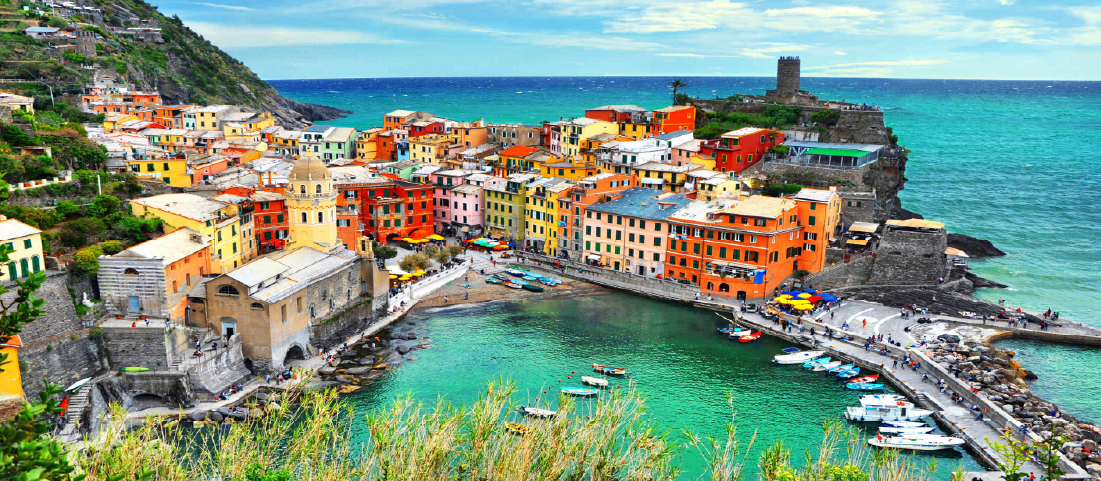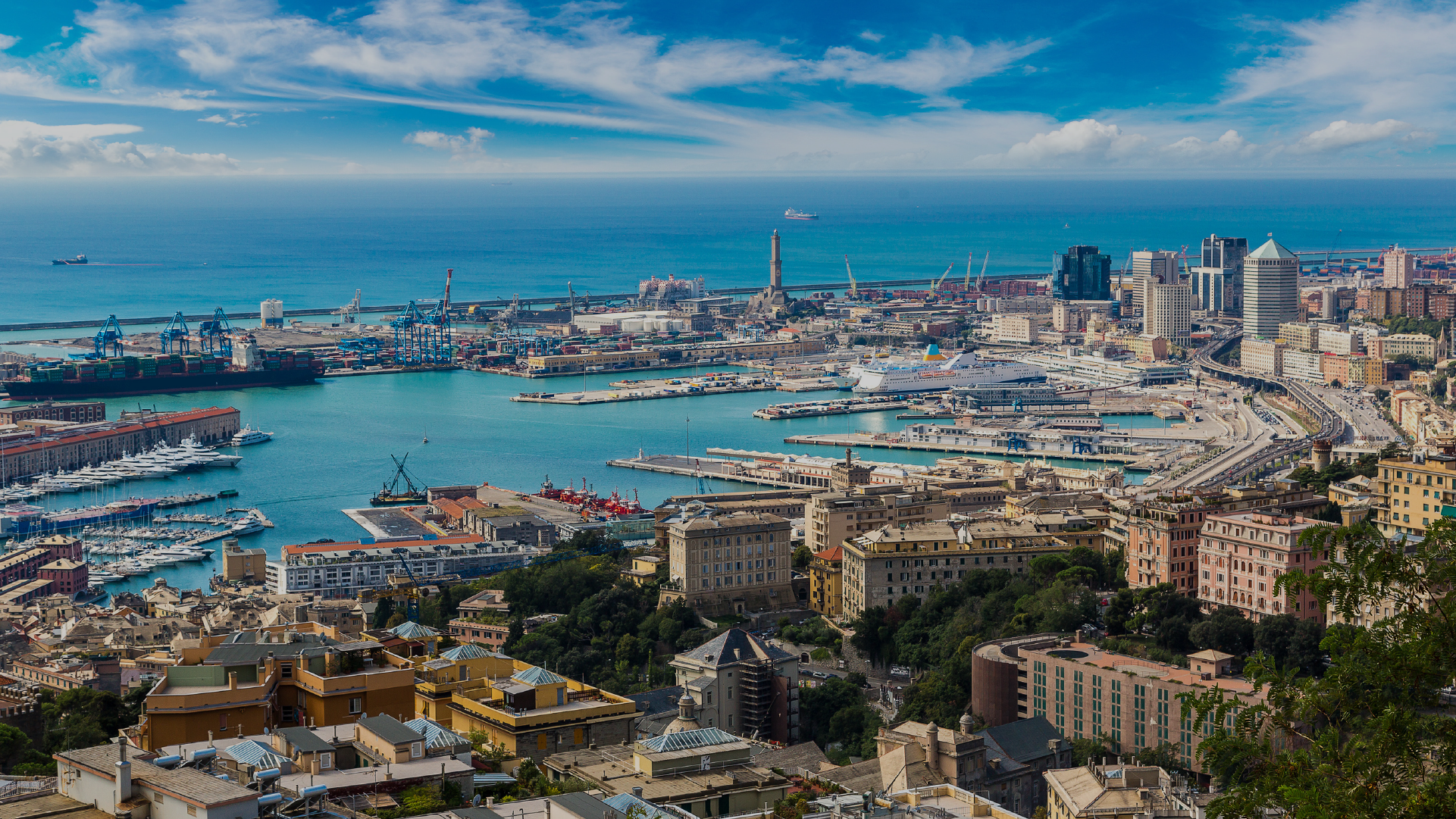The historical centre of Genoa, the heart of the Old Town, is a place rich in history and charm, recently restored after years of neglect. To discover old Genoa, you have to walk through the picturesque medieval alleys (caruggi) and narrow streets (creuze), admiring noble palaces and harmonious squares such as Piazza delle Erbe and Piazza San Donato, overlooking ancient churches. Much of the historic centre is a World Heritage Site, with historical sites such as the Roman and Etruscan Castrum, and magnificent buildings such as Palazzo Spinola and Palazzo Ducale, evoking the splendour of the maritime republic. The centre also offers many opportunities for recreation, with typical inns, historic bars, live music venues and fascinating century-old workshops.
01
The historic centre of Genoa

02
The Aquarium of Genoa
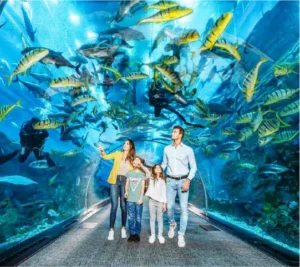
The Aquarium of Genoa, opened in 1992 in the Old Port, is the city’s main tourist attraction and the largest aquarium in Italy, second in Europe only to the one in Valencia. It houses 12,000 specimens of 600 different species, including marine, rainforest and freshwater animals, in environments that reproduce their natural habitats. A visit to the Aquarium offers an exciting and educational experience, with over 70 exhibition tanks where you can observe sharks, seals, turtles, penguins and much more. Educational areas enrich the viewing experience with scientific information. The Cetacean Pavilion, designed by Renzo Piano, allows visitors to admire dolphins both from an underwater perspective, thanks to a basement tunnel, and from above, offering a spectacular view of marine mammals out of the water.
03
The Palazzi dei Rolli in Genoa
The Palazzi dei Rolli are splendid residences of the Genoese nobility that, between the 16th and 17th centuries, offered hospitality to visiting illustrious personages. Over one hundred residences were included in the Rolli degli Alloggiamenti pubblici, lists that were updated periodically. The palaces were divided into three categories (bussoli) based on their architectural value: the first for cardinals, princes and viceroys; the second for feudal lords and governors; the third for princes and ambassadors. Since 2006, forty-two of these palaces, with their atrium, courtyard, staircase and garden sequences and rich interior decoration, have been recognised by UNESCO as World Heritage Sites. Strolling along Via Balbi, Via Garibaldi, Via Lomellini and Via San Luca, one can discover this historical heritage. The palaces can be visited during the Rolli Days, organised almost every weekend by the City of Genoa.
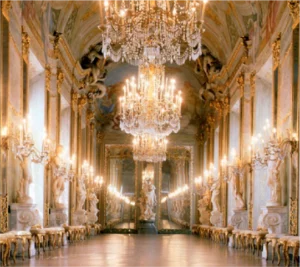
04
San Lorenzo Cathedral in Genoa
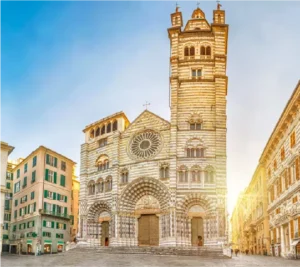
The Cathedral of San Lorenzo, built from the 9th to the 16th century, presents a combination of architectural styles due to centuries of remodelling. Consecrated by Pope Gelasius II in 1118, the cathedral has a 13th-century Genoese Gothic façade with French influences, visible in the portals and central rose window. The Romanesque side walls and portals date back to medieval times, while the dome, designed by Galeazzo Alessi, and the bell tower were added in the 16th century.
05
Genoa's Old Port
Once the heart of Genoa’s mercantile activity, the Porto Antico area of Genoa was transformed in 1992 by Renzo Piano for the Colombiadi, becoming a centre of tourism and leisure. Today, the Porto Antico is home to attractions such as the Aquarium, a major destination for visitors of all ages, and the Biosphere, a steel and glass sphere reproducing a tropical environment with plants, butterflies and small animals. The Galata, the largest maritime museum in the Mediterranean, and the Bigo, a metal structure with a panoramic lift, are other modern symbols of Genoa. The redevelopment has also involved old port buildings, such as the Magazzini del Cotone (Cotton Warehouses), which now house cultural and recreational facilities, including the Città dei bambini (Children’s City), a large space dedicated to play, science and technology for children aged 2 to 12.
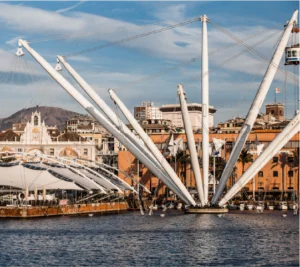
06
Boccadasse
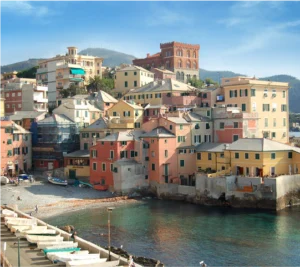
Weather permitting, a pleasant walk of about 1 km along Corso Italia, past breathtaking views, lidos and Art Nouveau villas, leads from the Foce to the picturesque village of Boccadasse. This corner of Genoa, with its colourful houses, fishermen’s boats and seaside cafés, has preserved the authentic atmosphere of a seaside village, resisting the advance of concrete. The village is dominated by the Church of Sant’Antonio da Padova, rich in ex-votos left by sailors who survived shipwrecks. From the belvedere in front, there is a splendid panorama of the village and the coast. From here, Via Aurora, a typical Ligurian ‘crêuza’, leads directly to Boccadasse. In the village there is a small pebble beach with clear waters, crowded in the summer months by residents and tourists looking for a refreshing swim after their walk along Corso Italia.
07
Galata | Genoa Sea Museum
The Galata Museo del Mare is an important testimony to Genoa’s deep connection with the sea and the largest maritime museum in the Mediterranean. Dedicated to the history of navigation, the museum offers a fascinating journey through time by exhibiting vessels of various sizes, nautical instruments, charts and interactive stations. The tour starts on the ground floor with the era of rowing ships, continues on the upper floors with the routes of sailing ships and the great geographical explorations, and ends on the third floor, dedicated to the voyage to America.
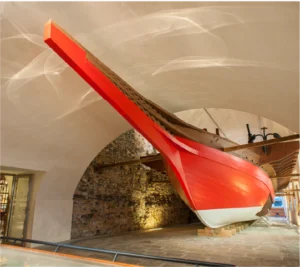
08
Via Garibaldi and Strada Nuova Museums in Genoa
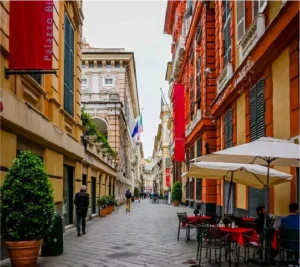
Via Garibaldi, also known as ‘Strada Nuova’ or ‘Via Aurea’ for the magnificence of its buildings, is a UNESCO World Heritage Site. This elegant 16th-century street hosts a unique museum itinerary, linking three historic town houses: Palazzo Rosso, Palazzo Bianco and Palazzo Doria Tursi, offering an immersion in the ancient art and opulence of the era.
09
The Lighthouse of Genoa
The undisputed symbol of Genoa, the Lanterna is the city’s historic lighthouse, 77 metres high and situated on a 40-metre hill, reaching a total height of 177 metres above sea level. Built in the 14th century on a site that had housed a lighthouse since 1128, the Lanterna was created to guide ships to the harbour and control their movements. In 1326 the first oil lantern was introduced, and in 1340 the municipal coat of arms was painted on the tower. The current appearance of the lantern dates back to the 16th century, with a tower divided into two overlapping sections, each with a gallery. Inside, a staircase of 172 steps leads to the first terrace. Next to the tower is the Lanterna Museum, a multimedia museum dedicated to the city, which can be reached by a walk of about 800 metres from the Ferry Terminal, along the old walls to the lighthouse.
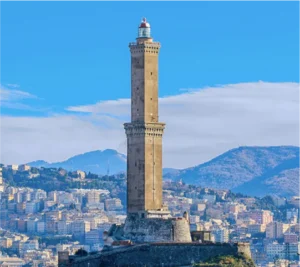
10
The Castelletto esplanade
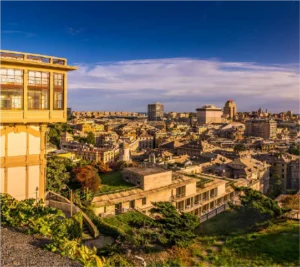
One of the most spectacular views of Genoa can be admired from the Spianata di Castelletto, high above the city. This place offers a breathtaking view of the slate roofs, the harbour, the sea and the surrounding hills. The Spianata is located where the Castelletto Fortress once stood, demolished in 1849 by the Genoese to eliminate a possible control and bombing point in case of invasion. There are three ways to reach the Spianata, all of them fascinating: by car, taking the scenic Circonvallazione a Monte; on foot, through the suggestive creuze celebrated by Fabrizio De André, going up Via Garibaldi and Salita San Francesco between gardens and picturesque views; or, in a more comfortable and elegant way, using the Art Nouveau lift from Piazza Portello, a true jewel of the late 19th century.
Tourist Information
The Genova City Pass is Genoa’s official tourist pass, designed to help visitors discover the city and optimise their free time. With the Genova City Pass, tourists can forget about tickets, cash and queues and focus exclusively on their visit. This pass offers easy access to museums, attractions and transport, allowing for a worry-free experience in Genoa.
The Genova Museum Card is a single ticket, valid for 24 hours, which gives you one-time access to the city’s 28 museums, including 19 civic and 9 non-civic, at a cost of €15 and includes AMT public transport.
OUTSIDE GENOA
Visit Portofino
Portofino is a Ligurian village of ancient origins, with a centre that retains its Roman layout. Via Roma leads to the famous ‘piazzetta’, Piazza Martiri dell’Olivetta, surrounded by shops and restaurants, and the 12th century church of San Martino. The Castle of San Giorgio, with its gardens and the Park Museum, dominates the Umberto I pier, while the Brown Castle, an ancient fortress with panoramic terraces, stands on the tip of the promontory. Portofino is a popular tourist destination, often chosen as a location for films and TV series, such as ‘The Wolf of Wall Street’ and ‘Hotel Portofino’. Portofino is easily reached either by boat, for a scenic arrival from the sea, or by train with a stop at Camogli San Fruttuoso, from where it is possible to continue on foot or by public transport.
A short distance away, the Bay of San Fruttuoso, hidden between Camogli and Portofino, enchants visitors with its small white pebble beach dominated by an ancient abbey and surrounded by dense Mediterranean scrub. The emerald green waters reflect the lush vegetation enveloping the cliffs, preserving the unspoilt beauty of this remote and evocative place. The bay is accessible by boat from both Genoa and Portofino, making it an ideal stop for those wishing to explore the natural and historical wonders of the area. These two places, connected and accessible, represent a unique experience of nature, history and culture on the beautiful Ligurian Riviera.
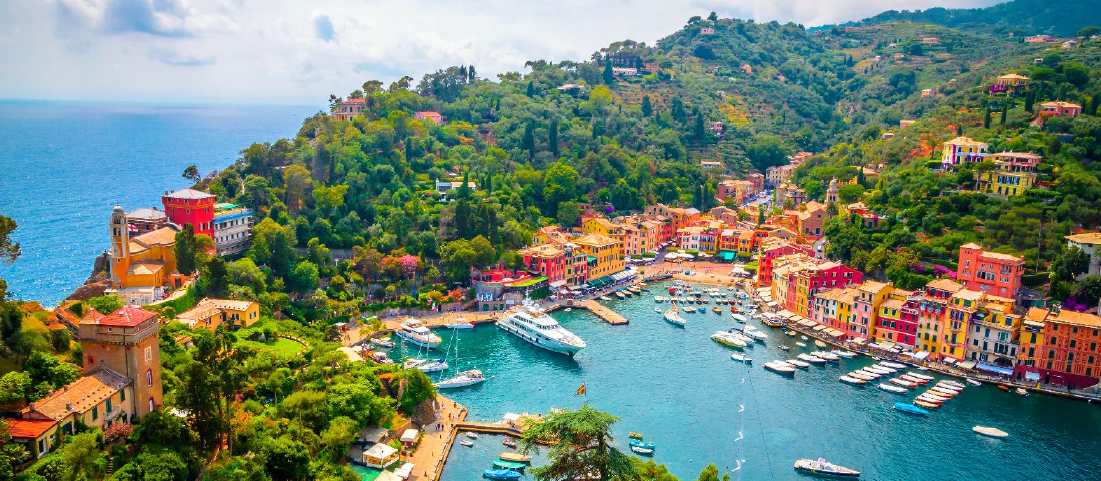
OUTSIDE GENOA
Visit Cinque terre
The Cinque Terre To discover the wonders of the Cinque Terre, a UNESCO heritage site, leaving from Genoa is simple and straightforward. This enchanting stretch of Liguria, consisting of the villages of Monterosso, Manarola, Corniglia, Riomaggiore and Vernazza, is easily accessible by train or car. Tourists can take a direct train from Genoa that will take them directly to the heart of the Cinque Terre, passing through Levanto, the gateway to this natural paradise. The Cinque Terre offer a unique experience amidst lush Mediterranean scrub, ancient sanctuaries and the characteristic dry-stone walls where the vineyards of the famous Sciacchetrà wine are cultivated. Besides the villages, Levanto, Bonassola, Framura and Deiva Marina, with their beaches and crystal-clear sea, are ideal for those seeking beauty and relaxation. For visitors keen on active holidays, the area is perfect for trekking and diving all year round, while the cycle path from Levanto to Framura offers a route to explore with tranquillity and charm.
